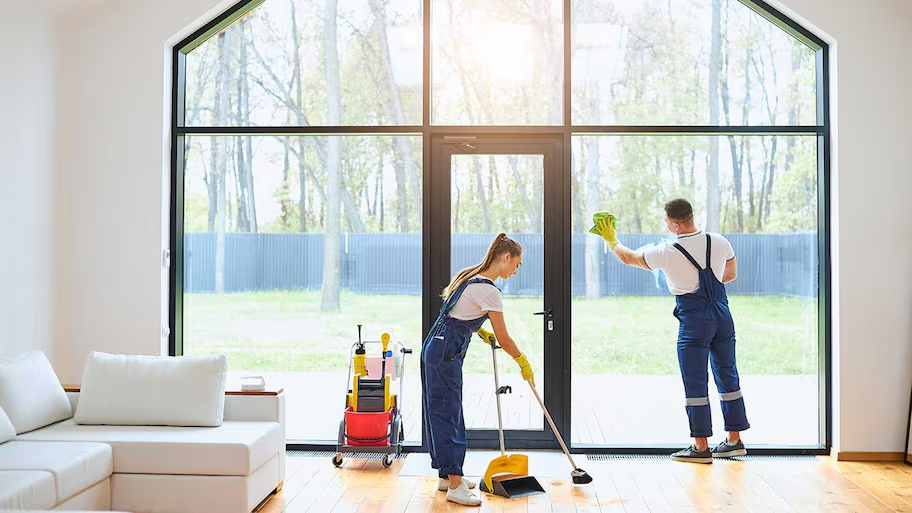
Mattress cleaning cost depends on the number of mattresses being cleaned and the size of each. Use this guide to better understand mattress cleaning prices.
Stubborn chewing gum and pet odor are no match for this cleaning method


Artificial grass is the epitome of low-maintenance landscaping. You’ll never need to lug your mower out of the garage. You won’t have to spend hundreds on lawn care. Your grass will always be greener, even when your neighbor's yard turns brown in the middle of a drought. Still, contrary to popular belief, you will need to water it—just not how you think.
Artificial grass gets dirty, just like a patio or deck. This is especially true for pet owners who let their furry friends enjoy (read: use the bathroom) in the yard. Luckily, cleaning is simple. Here’s how to clean artificial grass in 60 minutes flat.
The cost of artificial turf isn’t cheap, but compared to a traditional lawn, you’ll save money in the long run as long as you properly maintain your grass. This means regular cleaning. The frequency depends on how you use your lawn. Pet owners and people who live in dry, desert climates may need to clean their turf every week, while others may be able to stretch cleanings to every two weeks. Set a schedule in advance.
The next step is to pick a cleaner. Most artificial turf has some antimicrobial properties, but you’ll still want to use a mild antibacterial solution (especially if your kids or pets regularly play in the yard). Pick a non-toxic, biodegradable cleaner that won’t harm critters or the environment. You can purchase a cleaner specifically made for artificial grass online or make your own using vinegar and water. If you have pets, reach for a cleaner that specifically knocks out pet odor.
Use a lawn rake or broom to gently remove branches, leaves, and other accumulated debris. Make sure your broom doesn’t have metal bristles since they can damage artificial turf.
If your artificial grass has any stains, spot treat them using granular detergent. First, remove sticky residue (like the odd melted crayon or lost chewing gum) with a knife. After that, mix one pint of detergent with one teaspoon of water, and use a sponge or cloth to rub the solution into the stain (the same way you’d spot-treat laundry). Once the stain lifts, rinse the area with a garden hose.
Grab your bucket and prepare your cleaning solution per the manufacturer’s directions. If you’re making a DIY turf cleaner, use equal parts water and vinegar.

Wet your turf using your garden hose.
Attach the hose-end sprayer to your garden hose, fill the container with cleaner, and evenly spray the cleaner across your artificial grass.
Remove the hose-end sprayer and reconnect your regular nozzle. Rinse away the cleaner with your garden hose until you no longer see foam or soap suds.
Let your lawn dry in the sun. Avoid disturbing the turf until it’s completely dry.
Artificial grass sometimes has an infill made of rubber or sand, protecting the turf and keeping the blades perky. You’ll occasionally need to refresh the infill when levels start looking low. Typically, you’ll want about one pound of infill per square foot of turf. Add it as needed.
Use your garden rake or broom to reposition matted blades until they’re upright.
Cleaning artificial grass isn’t difficult, but it can be time-consuming—especially if you need to clean your lawn every weekend because you have pets. Some homeowners prefer to hire a local lawn care service specializing in artificial turf the same way you’d hire a local landscaper to mow your lawn each week. Other homeowners only bring in the professionals for larger tasks like deep cleaning, repairs, or infill refills.
Vacuuming may seem like an easy way to clean fake grass—but that’s not always the case. Avoid vacuuming if your turf has an infill, which will clog even the toughest vacuums (not to mention, you’ll also have to add more infill after the fact).
Artificial turf is like a carpet for your backyard. Spills and stains happen, but you can get rid of them with the spot treatment outlined in the steps above. It’s best to get rid of stains when they happen rather than wait for your scheduled cleaning.
As long as you keep up your cleaning schedule, vinegar and water should neutralize pet odor. If that doesn’t work, reach for a commercial solution made specifically for pet owners.
From average costs to expert advice, get all the answers you need to get your job done.

Mattress cleaning cost depends on the number of mattresses being cleaned and the size of each. Use this guide to better understand mattress cleaning prices.

Cleanout cost may be one of your first thoughts when left in charge of an estate. We walk through factors to expect, the professional estate cleanout services cost, and ways to save.

Hiring a house cleaner frees up your schedule and keeps your home spotless. The cost to hire a house cleaner depends on the size of your house, your schedule, and who you hire. Use this guide to understand typical house cleaning prices better.

There is nothing like the convenience of a central vacuum. Here are some essential central vacuum maintenance tasks to keep yours in tip-top-shape.

Curious how much it costs to hire a housekeeper? Discover 2025 prices, key cost factors, and tips to save on professional housekeeping for your home.

Hiring a house cleaner is a great fit for many. It can be the best way for busy people to have a clean home without giving up their free time. Here are some key things to help you decide whether hiring a house cleaner is worth your hard-earned money.